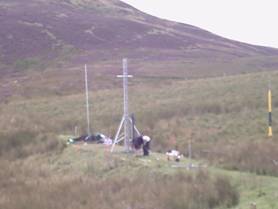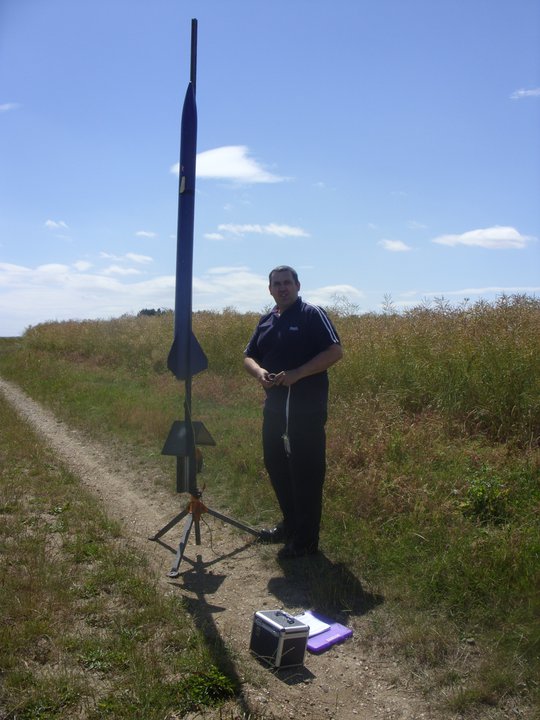HyperLOC835
Brief:
This rocket was purchased for me by my wife as a xmas present in 2007; it is approximately 72” long and 4" in diameter. I chose this rocket because it has a 54mm motor mount so I will be able to use it for my Level 2 Certification, it can also be flown on motors as low as H class and lastly because it is hybrid ready.
The standard the kit comes with a 22” long 54mm motor mount. As with my sprint I intend to use PRO38 motors in the rocket. So I also purchased a 54 - 38mm motor adaptor. With its hybrid ability and the motor adaptor I have a large range of motors to choose from with this rocket.
The kit came with:
- one 34” x 4” card booster airframe tube
- one 11.25” x 4” card airframe tube
- one 11.25” x 4” card airframe tube
- one 7” coupler tube
- one 22” motor tube 54mm
- one Loc/electronics bay kit
- three 3/16" plywood fins
- three plywood centering rings 54mm
- one plywood bulkhead plate
- one 4” plastic nose cone
- eye bolt and hardware
- 2 x 10' elastic shock cord
- a 18” drogue parachute
- a 50” main parachute
- Instruction leaflet
All of the parts were of a high quality.
Construction:
construction of the HyperLOC is almost identical to that of the BSD Sprint, although the instructions you get with the HyperLOC are only on a sheet of A4 paper and not a booklet like the Sprint.
You can view some of my rocketry pictures Here
Finishing:
I applied 2 coats of white automotive primer, (from Halfords) with a light sanding between each coat.
The rocket was then finished in 4 coats of florescent orange.
Flight: 1 Due to the motor I would be using my first opportunity to fly the Hyperloc would at bigEARS May 2008, I packed my rocket, tools and paperwork into the car and off we went, three hours later we were in Cambridgeshire. Before I could fly I had to take and pass the UKRA level two certification exam, I promptly located Cath at the UKRA stand, I waited my turn and luckily passed my L2 exam. Under the supervision of the RSO, I prepped and loaded the HyperLOC with a PRO38 J285. After some minor problems, we had lift off. The HyperLOC climbed to a peek altitude of 3275Ft and deployed its parachute at apogee. This was some several hundred feet higher than spacecad had predicted and made for an hours walk to collect my rocket. Level 2 Certificate successful. |
Photo (C) Naill Oswald |
Flight : 2 Re-painted the hyperloc835 in supersonic blue. Flown at the IRW 2008, Largs, Scotland. Launch on a Pro38 I205 to an altitude of 1877ft deployed its parachute at apogee, landed approximately 300ft from the Launch Pad. No damage.
|
|
Flight : 3 Flown at the IRW 2009, Largs, Scotland. Launch on a Pro38 I170 to an altitude of 1608ft. Single stage, deployed its parachute at apogee, landed approximately 2000ft from the Launch Pad, due to high gusts of winds. small zipper in airframe, first flight using onboard video, but after this photo was taken the weather changed and we had a spot of rain, the rocket landed in water the camera was wrecked, :( |
|
Flight : 4 Flown at Ears event July 2010, on a Pro38 I170 using CD3 Co2 Deployment system, and onboard MD80 video Camera. Altitude was 1734ft Flew over 100ft higher on the same motor, can only put it down to the weather, this flight was on a fantastic summers day, although there was slight wind 5-10mph, with gusts upto 20mph. |
|
|
|



